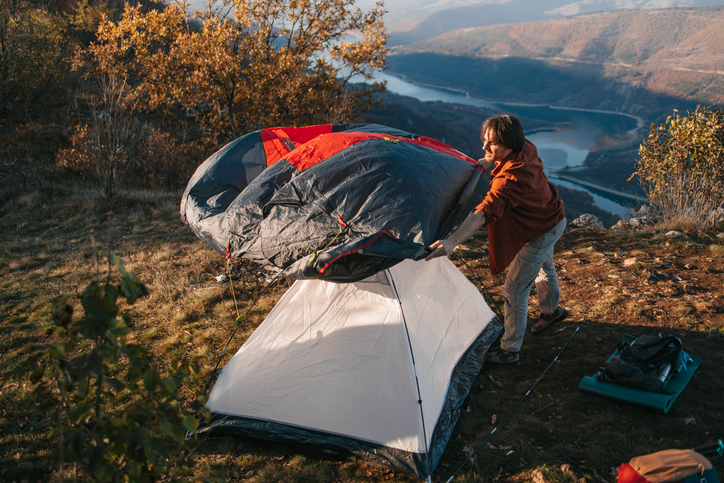For backpackers and hikers, selecting the right tent is crucial for a comfortable and enjoyable outdoor experience. The key lies in finding a tent that strikes a perfect balance between lightweight design and functional features. In this article, we’ll explore various options for lightweight backpacking tents, ideal for hikers who prioritize ease of carry without compromising on comfort and durability.
Ultralight Solo Tents
Perfect for the Lone Explorer
- Features: Designed for single hikers, these tents typically weigh less than 3 pounds and have a compact design.
- Example Models: REI Co-op Quarter Dome SL 1, Big Agnes Fly Creek HV UL1.
Two-Person Backpacking Tents
Balancing Space and Weight
- Features: Offering a bit more space while still being lightweight, these tents usually weigh between 3 to 5 pounds.
- Example Models: MSR Hubba Hubba NX 2, NEMO Dragonfly 2.
Three-Season Tents
Versatile and Functional
- Features: Ideal for spring, summer, and fall, these tents are designed to handle a range of conditions, including rain and light snow.
- Example Models: Big Agnes Copper Spur HV UL2, The North Face Stormbreak 2.
Four-Season Tents
For the All-Weather Hiker
- Features: Built to withstand harsher conditions, including heavy snow and strong winds, while still being relatively light.
- Example Models: MSR Access 2, Mountain Hardwear Trango 2.
Tarp Tents
Minimalist and Ultralight
- Features: These are essentially tarps that can be set up as makeshift tents using trekking poles. They’re extremely light but offer less protection.
- Example Models: Hyperlite Mountain Gear Echo II, Zpacks Hexamid Solo.
Pop-Up Tents
Convenience in a Flash
- Features: Pop-up tents are all about convenience and quick setup, though they tend to be slightly heavier.
- Example Models: Quechua 2 Seconds Easy Fresh & Black, Coleman Pop-Up Tent.
Double-Wall Tents
Enhanced Comfort and Protection
- Features: These tents have two layers – a mesh inner tent and a waterproof outer fly – providing better insulation and protection.
- Example Models: Sea to Summit Telos TR2, Marmot Tungsten UL 2P.
Hybrid Tents
The Best of Both Worlds
- Features: Combining elements of double-wall and single-wall tents, hybrids aim to reduce weight while maximizing protection.
- Example Models: Sierra Designs Flash 2 FL, The North Face Assault 2.
Hammock Tents
Elevated Sleeping Experience
- Features: These are essentially hammocks with a protective covering, perfect for areas with plenty of trees.
- Example Models: Hennessy Hammock Ultralite Backpacker Asym Zip, Warbonnet Blackbird.
Bivy Sacks
Ultra-Minimalist Shelter
- Features: Bivy sacks are more like waterproof sleeping bag covers, offering the most minimal shelter.
- Example Models: Outdoor Research Alpine Bivy, Rab Ridge Raider.
Choosing the right backpacking tent involves considering factors like weight, space, weather resistance, and ease of setup. Lightweight options have come a long way in terms of design and technology, offering hikers an array of choices to suit their needs. Whether you’re a solo hiker or part of a duo, prefer minimalist adventures or all-season expeditions, there’s a lightweight tent option out there for you. Remember, a good tent can make all the difference in your backpacking experience, turning a good trip into a great one!


Comments are closed.